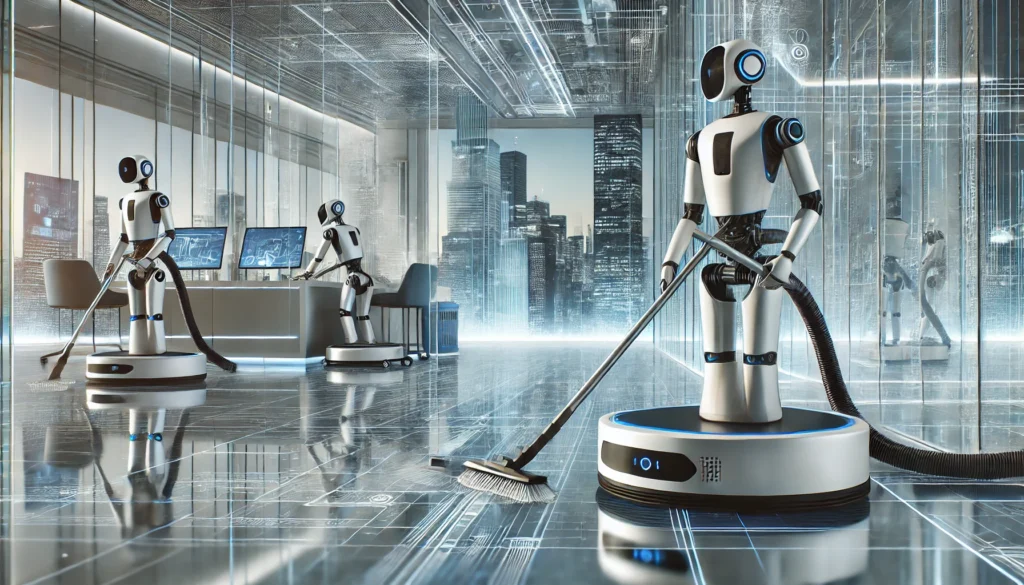Janitor AI Revolutionizing Cleanliness and Efficiency in Modern Spaces

Introduction
In the modern age where technology intertwines with daily life, Artificial Intelligence (Janitor AI) is transforming numerous industries, enhancing efficiency and pioneering innovative solutions. One such groundbreaking application is Janitor AI, which employs sophisticated algorithms and robotics to manage and execute janitorial tasks. This technology is not just an advancement; it’s a radical shift in how we manage cleanliness and maintenance in various environments, from bustling corporate offices to sprawling medical facilities. As urban areas expand and the demand for efficient, non-intrusive cleaning services increases, Janitor AI is emerging as a vital tool in maintaining public and private spaces.
The Evolution of Janitorial Services
Historically, janitorial work has been labor-intensive, with custodians and cleaners providing the essential service of maintaining cleanliness and hygiene in physical spaces. The inception of janitorial services can be traced back to simple tools and manual labor. Over time, the integration of technology, such as vacuum cleaners and automated floor scrubbers, marked the initial steps toward modernizing these services. However, the real transformation began with the integration of AI, propelling janitorial practices into a new era. This shift not only enhances cleaning outcomes but also reshapes the role of human workers in the industry, allowing them to take on supervisory and maintenance roles that require more complex decision-making skills.
Core Technologies Behind Janitor AI
Janitor AI incorporates several cutting-edge technologies. At its core, machine learning algorithms enable systems to learn from data, adapt to new environments, and make informed decisions. Robotics, equipped with sensors and cameras, navigate and interact with spaces needing maintenance with minimal human oversight. These autonomous machines can perform a variety of tasks, from vacuuming to the disposal of hazardous materials, operating around the clock if necessary. Additionally, IoT sensors play a crucial role by providing real-time data on room conditions, which helps in scheduling cleanings based on actual usage rather than fixed times.
Applications of Janitor AI
In commercial environments like office buildings and retail centers, Janitor AI can significantly improve operational efficiency. These AI systems work discreetly during low-traffic hours, ensuring that spaces are pristine without interrupting daily business activities. The technology is not only cost-effective but also scales according to the size and specific needs of a facility, providing a customizable cleaning solution that traditional methods cannot match.
Healthcare Facilities
Healthcare settings benefit immensely from Janitor AI, where sanitation and hygiene are paramount. These AI systems are designed to meet stringent cleanliness standards, reducing the risk of infections and cross-contamination. By automating routine cleaning tasks, healthcare providers can focus more on patient care, relying on Janitor AI to maintain a sterile environment.
Industrial and Manufacturing Settings

Industrial spaces present unique challenges due to their scale and the nature of work conducted. Janitor AI in these settings is tailored to handle large-scale cleanups, manage waste products efficiently, and maintain safety standards. By automating these processes, companies can reduce the risks of accidents and ensure compliance with health and safety regulations.
Public and Outdoor Spaces
For public and outdoor spaces, Janitor AI offers solutions that go beyond cleanliness. These systems help manage waste, clean public restrooms, and maintain transit stations, contributing to overall urban hygiene and public health. The technology adapts to different environmental conditions and crowd sizes, ensuring public areas are clean and welcoming at all times.
Benefits of Janitor AI
Adopting Janitor AI translates into enhanced cleaning efficiency and effectiveness. These systems work continuously and are less prone to errors, ensuring a consistently high standard of cleanliness. Furthermore, they significantly reduce labor costs and minimize human involvement in mundane tasks. Environmental sustainability is another key benefit, as these AI systems optimize the use of resources like water and cleaning agents, reducing waste and environmental impact.
Challenges and Limitations
Despite its benefits, Janitor AI faces technical and ethical challenges. The complexity of cleaning diverse environments means AI systems must continually adapt and improve. There are also concerns about job displacement in the janitorial sector, highlighting the need for policies that support workforce transition. Additionally, integrating these technologies into older infrastructures can be challenging and costly.
Future Prospects of Janitor AI
The future of Janitor AI looks promising, with ongoing advancements expected to make these systems even smarter and more interactive. The potential expansion into residential markets could transform home maintenance, and upcoming regulatory changes might further define the scope of AI in janitorial services. As we look forward, the synergy between human oversight and robotic execution will likely become the standard, promoting a cleaner, more efficient future.
Conclusion
Janitor AI stands at the forefront of a technological revolution in cleaning and maintenance. By balancing advanced technology with thoughtful integration, it offers a glimpse into a future where cleanliness and efficiency are seamlessly integrated into our environments. As we continue to embrace these innovations, the potential for cleaner, smarter, and more sustainable living spaces becomes increasingly attainable.
You May Also Read: https://livermoreartsup.com/taco-proxy/




